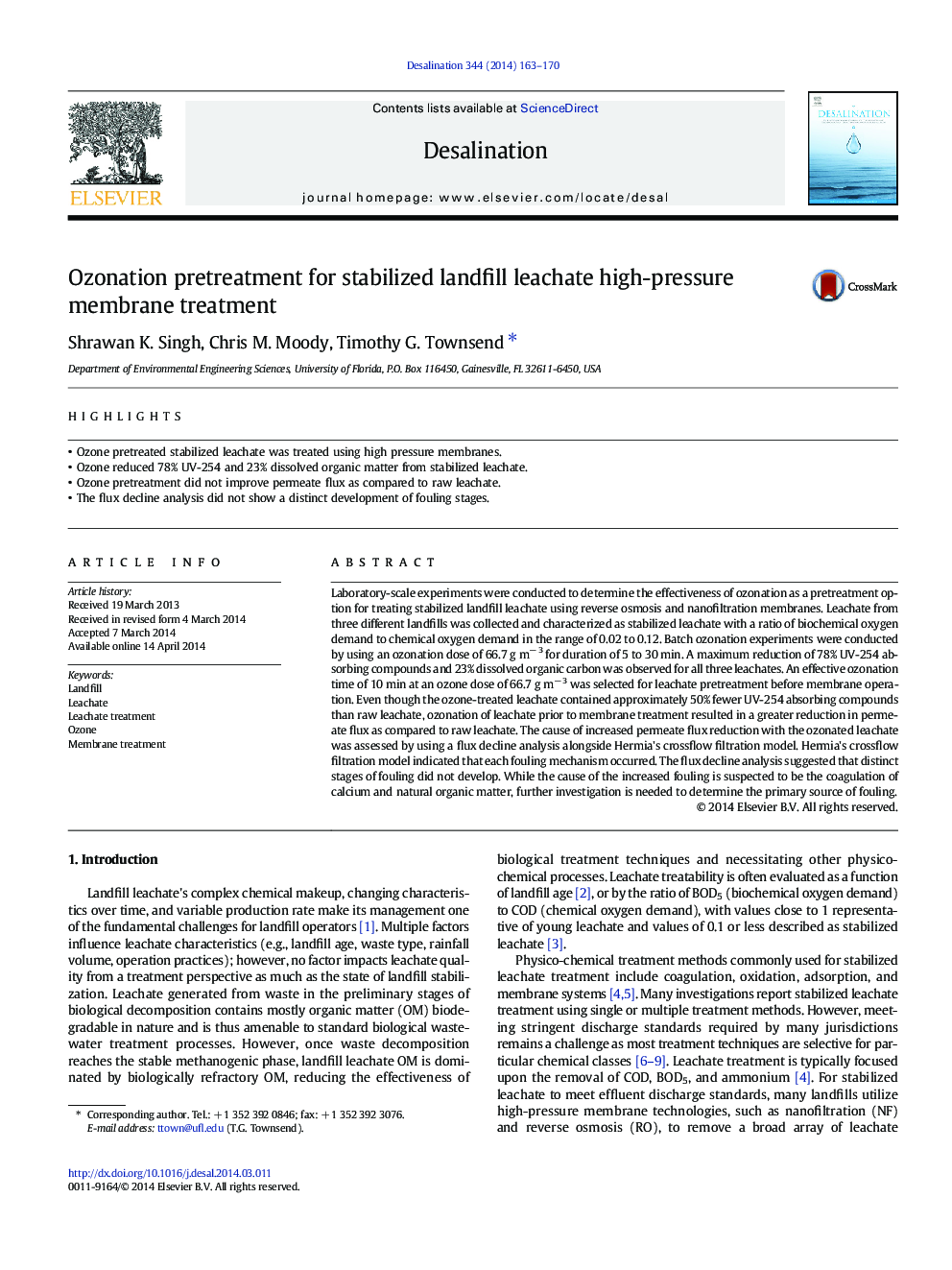| Article ID | Journal | Published Year | Pages | File Type |
|---|---|---|---|---|
| 7008471 | Desalination | 2014 | 8 Pages |
Abstract
Laboratory-scale experiments were conducted to determine the effectiveness of ozonation as a pretreatment option for treating stabilized landfill leachate using reverse osmosis and nanofiltration membranes. Leachate from three different landfills was collected and characterized as stabilized leachate with a ratio of biochemical oxygen demand to chemical oxygen demand in the range of 0.02 to 0.12. Batch ozonation experiments were conducted by using an ozonation dose of 66.7 g mâ 3 for duration of 5 to 30 min. A maximum reduction of 78% UV-254 absorbing compounds and 23% dissolved organic carbon was observed for all three leachates. An effective ozonation time of 10 min at an ozone dose of 66.7 g mâ 3 was selected for leachate pretreatment before membrane operation. Even though the ozone-treated leachate contained approximately 50% fewer UV-254 absorbing compounds than raw leachate, ozonation of leachate prior to membrane treatment resulted in a greater reduction in permeate flux as compared to raw leachate. The cause of increased permeate flux reduction with the ozonated leachate was assessed by using a flux decline analysis alongside Hermia's crossflow filtration model. Hermia's crossflow filtration model indicated that each fouling mechanism occurred. The flux decline analysis suggested that distinct stages of fouling did not develop. While the cause of the increased fouling is suspected to be the coagulation of calcium and natural organic matter, further investigation is needed to determine the primary source of fouling.
Related Topics
Physical Sciences and Engineering
Chemical Engineering
Filtration and Separation
Authors
Shrawan K. Singh, Chris M. Moody, Timothy G. Townsend,
